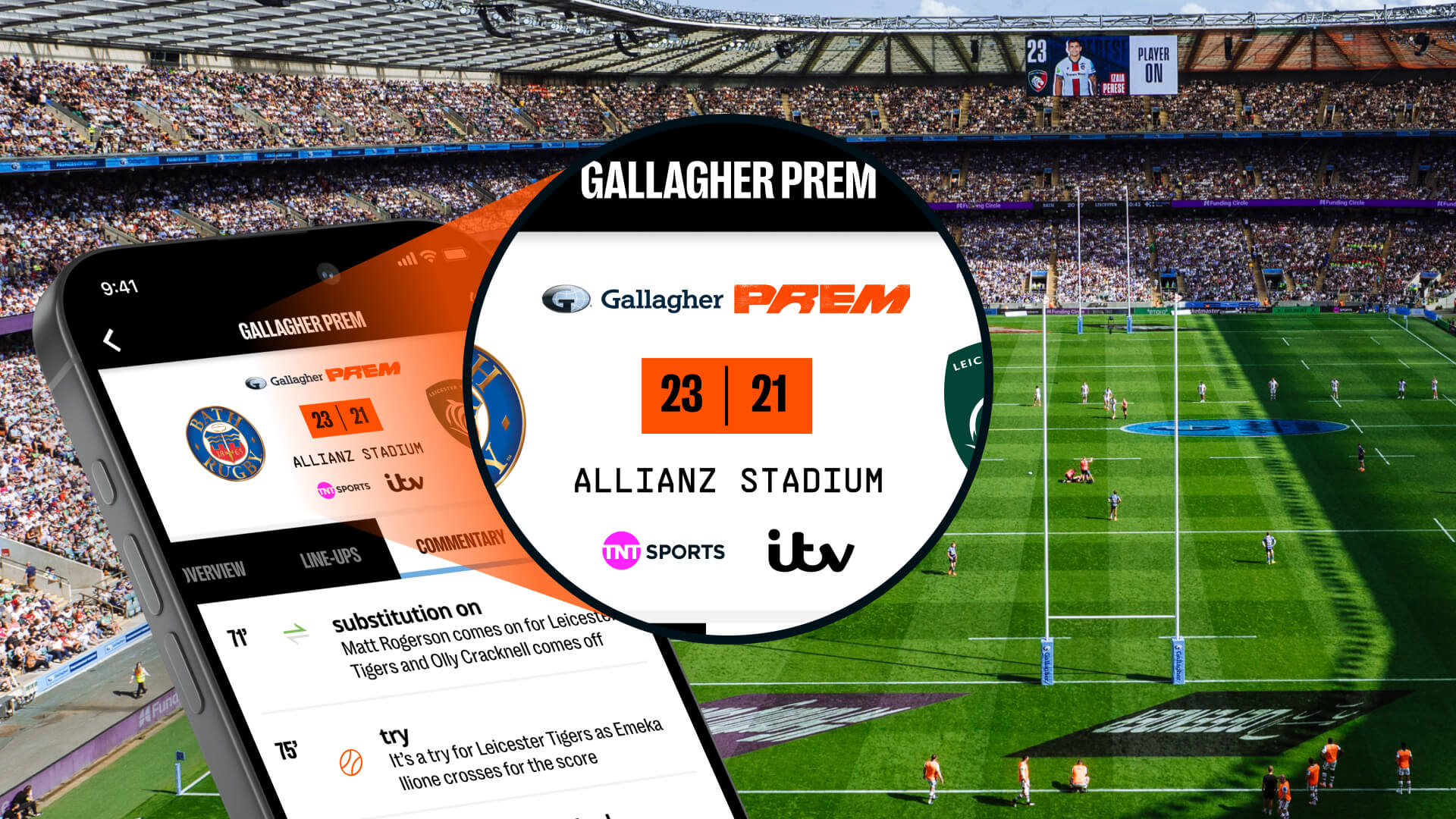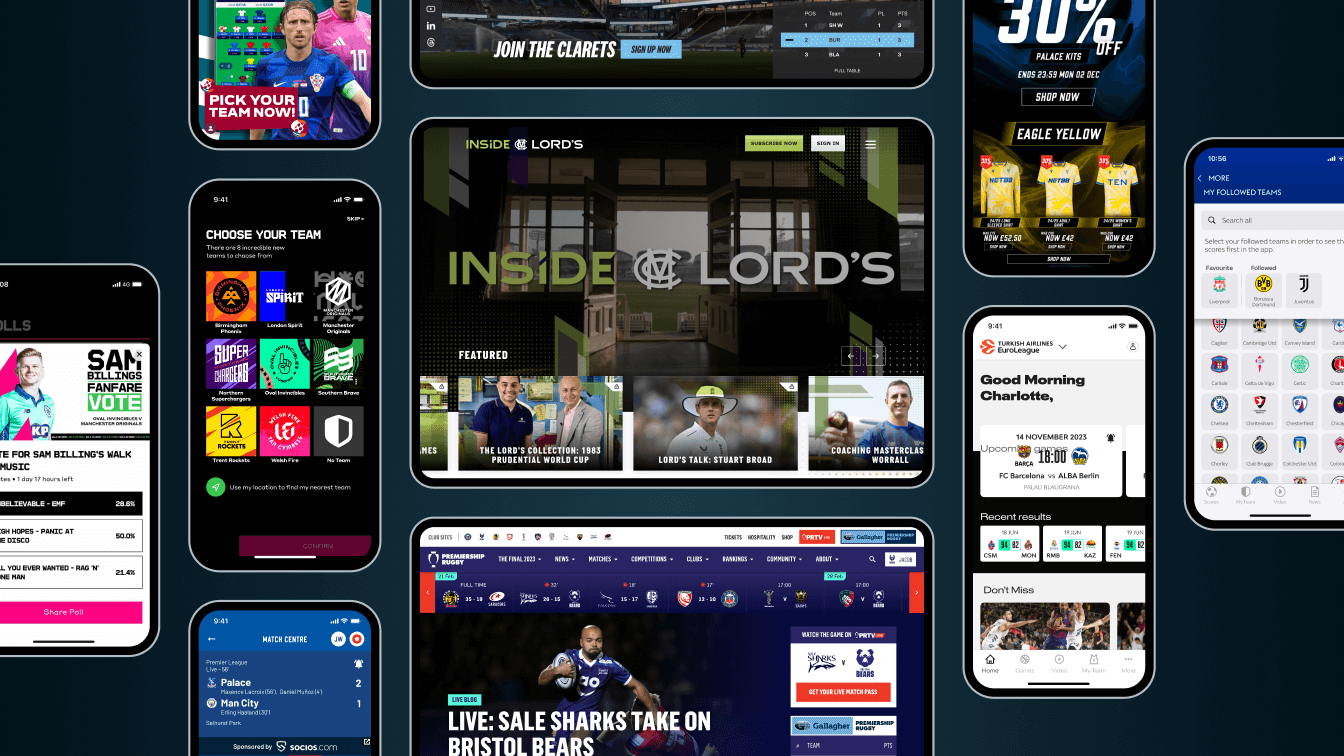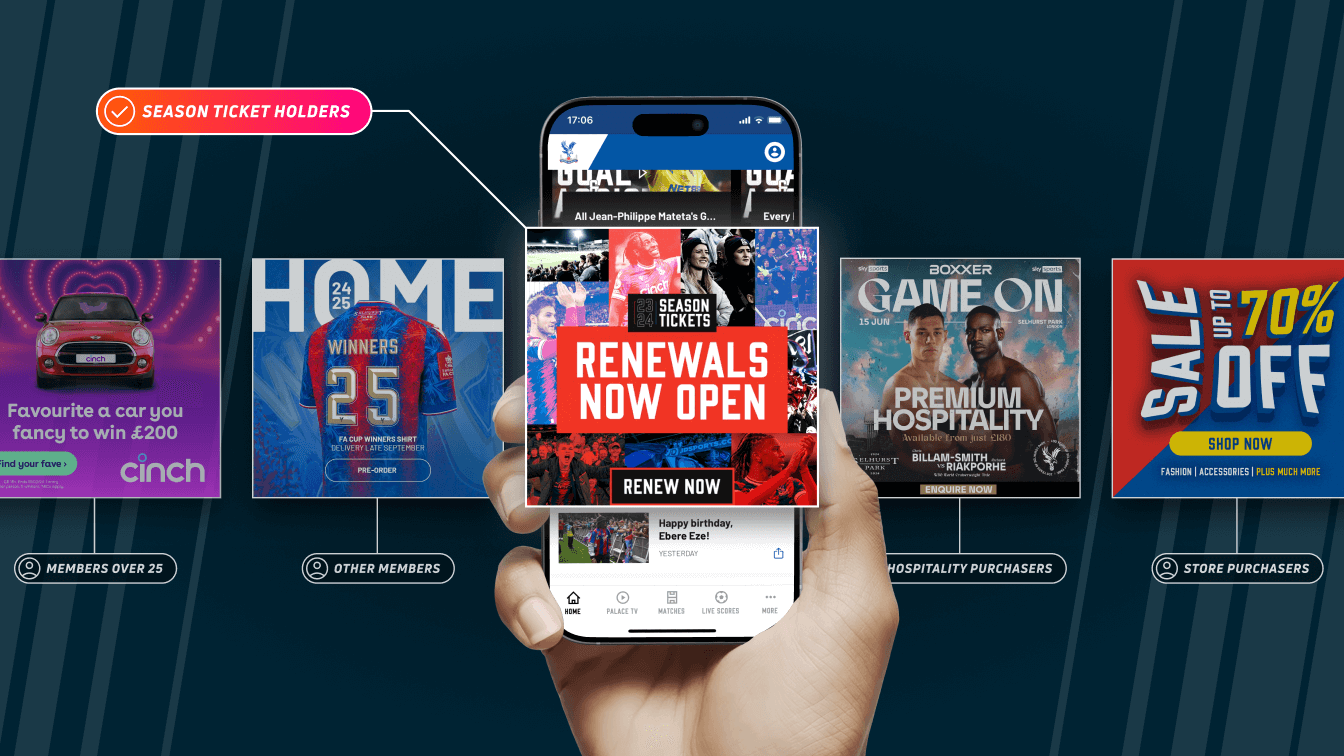
Quick summary
This article explains how rights holders can use their digital inventory and fan data to create more effective sponsorship packages that deliver real value for brands. With real-world examples and actionable steps, the post helps you unlock new revenue by aligning sponsorship with insights, not guesswork.
Sponsorship in sport is more than logos and banners
Many sports organisations struggle to unlock the full value of sponsorships. The issue isn’t a lack of brand interest; it’s the approach. Outdated strategies focus heavily on visibility, not engagement or return.
Without a clear inventory and strong data strategy, rights holders miss opportunities to create packages that resonate with sponsors. This leads to limited activation strategies and difficulty justifying sponsor investment.
In this InCrowd article, we’ll show you how a clear view of your digital inventory, paired with smart fan data, can turn your sponsorship strategy into a scalable, revenue-driving asset.
But first…
Why listen to us
At InCrowd, we help sports organisations unlock the full value of their digital inventory. From auditing your assets to building targeted campaigns powered by fan data, we’ve supported rights holders like Crystal Palace FC, Premiership Rugby, and UEFA in creating smarter, more valuable sponsorship propositions. We know what it takes to deliver modern sponsorships that work for fans and brands alike.
What is sponsorship in sports?
At its core, sponsorship in sports is a partnership between a brand and a rights holder, typically a club, league, or federation, where the brand pays for access to audiences, platforms, and association. Historically, this has meant naming rights, shirt logos, perimeter boards, and broadcast visibility.
But today, sponsorship is evolving.
Modern sponsors want more than exposure. They want engagement, personalisation, and measurable returns. That means rights holders must go beyond traditional assets and tap into digital channels, websites, apps, social content, CRM, and more, to build deeper connections between fans and brands.
Why sponsorship in sports matters
- Drives revenue: Sponsorship provides a major income stream for clubs, leagues, and events.
- Boosts brand visibility: Sponsors gain exposure through physical and digital assets across matches, platforms, and media.
- Enhances fan engagement: Effective sponsorship goes beyond brand placement. Smart activations, such as competitions, exclusive content, or personalised offers, create deeper fan connections.
- Unlocks data opportunities: With the right systems, sponsorship campaigns can gather insights on fan preferences and behaviour. At InCrowd, we help sports organisations set up data capture systems to maximise sponsorship opportunities.
- Improves marketability: Having strong commercial partners in place increases your credibility and attractiveness, not just to fans, but to future sponsors, broadcasters, and collaborators.
How to increase sponsorship in sports
Step 1: Assess your sponsorship inventory and assets
Many sports organisations focus on physical assets like stadium boards or shirts, but overlook the full value of their digital touchpoints. That’s where a proper digital inventory audit comes in.
Start by mapping out every digital platform and fan interaction point. You want to get a full picture of where your fans are most active and where you could introduce or improve sponsorship visibility.
At InCrowd, we worked with Premiership Rugby to identify the most effective digital touchpoints for sponsor content. We saw that targeted push notifications had a higher engagement rate and naturally introduced sponsor content. This led to a 65% increase in partner-branded content clicks and a 5x return on investment.

Key areas to include in your audit:
- Web and Mobile Platforms: Website pages, app screens, live score sections, content feeds.
- CRM and Email Tools: Fan databases, newsletter placements, and triggered campaign opportunities.
- Social Channels: Organic posts, promoted content, branded stories, and reels.
- In-Stadium Screens: LED boards, big screens, fan-facing kiosks with digital elements.
- Streaming and Video Content: Pre-roll ads, branded segments, match highlights, and clips.
Map these assets against audience touchpoints and engagement metrics to quantify their true commercial value.
As you audit, ask:
- Which platforms collect useful data?
- Where are your fans spending time?
- Which channels deliver the most engagement?
- What inventory is already commercialised and what isn’t?
Once this is documented, you can begin identifying opportunities to enhance these assets with better tracking. Integrate them with your data strategy and create more targeted, sponsor-ready propositions.
Step 2: Connect data to every digital asset
Linking data to your platforms allows you to track who’s engaging, how often, and what content drives action. This builds a detailed picture of fan behaviour that’s critical for sponsor targeting and performance reporting.
Here’s how to strengthen the data layer behind your inventory:
- Use tags and pixels: Track user interactions across websites, ticket pages, shop visits, and more.
- Integrate with your CRM: Make sure every campaign touchpoint feeds into a unified fan profile.
- Enable real-time analytics: See which assets perform best so you can optimise sponsorship placement.
- Capture meaningful data: Focus on behaviour (clicks, views, signups), not just surface-level metrics like impressions.
By resolving data fragmentation and connecting data across your inventory, you offer sponsors targeted, measurable outcomes based on actual fan behaviour. This makes your offering far more attractive and easier to scale.
Step 3: Package inventory into data-driven sponsorship propositions
Once your digital assets are audited, the next step is to turn them into compelling, sponsor-ready packages. Sponsors today want clear outcomes, not just visibility. When you combine your fan data with digital assets, you can offer tailored sponsorship opportunities that show real value.
To build data-powered propositions:
- Segment audiences: Use fan profiles to offer sponsors direct access to specific demographics, behaviours, or interest groups.
- Highlight performance metrics: Package assets with past campaign performance (e.g., engagement rates, conversions).
- Align with sponsor goals: Build packages around outcomes like newsletter sign-ups, app downloads, or product awareness.
- Show cross-channel opportunities: Combine app banners, email placements, social media, and ticketing journeys into one connected offer.
For each sponsor persona, define:
- The fan segment targeted
- The inventory asset(s) aligned
- Expected engagement or conversion outcomes
- Benchmarked performance metrics (click-through rates, viewability, etc.)
This approach transforms your inventory into a commercial engine, one that proves ROI with every activation.
Step 4: Use data to match the right sponsor with the right opportunity
Not every sponsor fits every asset. To deliver value for both fans and sponsors, you need to match brands with the right touchpoints, and that’s where data plays a crucial role.
Fan data gives insight into interests, behaviours, and demographics. This lets you align sponsor messages with fan preferences, ensuring relevance and avoiding generic, untargeted placements.
At InCrowd, we worked with EuroLeague to deploy the ID Single Sign On across digital platforms. This provided the team with significant data to create more tailored experiences, even with sponsored content, without disrupting the fan experience.
Here’s how to do it:
- Match by fan interest: A fitness brand can sponsor in-app training content. A food delivery brand can appear on matchday offers.
- Use location data: Promote sponsors with region-specific offers based on where fans live or attend games.
- Match by behaviour: Target sponsors to fans who’ve interacted with similar products or categories.
- Avoid fatigue: Rotate sponsor content based on frequency of exposure to maintain effectiveness and user trust.
When campaigns are live, implement tracking infrastructure such as tracking pixels, UTM parameters, and API data integrations across your owned platforms. Pair this with smart marketing strategies like A/B testing, targeted retargeting, and contextual content placement to maximise performance.
Step 5: Package and pitch with a data-driven story
When pitching to sponsors, don’t just list assets. Build a commercial proposition backed by fan data, engagement patterns, and predictive outcomes.
Here’s what to include in your pitch:
- Audience profiles: Show who your fans are, what they care about, and how they engage across platforms.
- Performance benchmarks: Use past engagement data to show what worked and why.
- Projected ROI: Offer realistic estimates based on reach, engagement, and conversion from similar campaigns.
- Custom packages: Combine digital and physical assets tailored to a sponsor’s goals, not just available inventory.
Drive smarter sponsorship with InCrowd
Sponsorship in sports is no longer just about visibility; it’s about value. When you embrace data at every stage of the journey, you can deliver more relevant experiences for fans and measurable outcomes for partners.
At InCrowd, we help rights holders identify, optimise, and monetise every digital touchpoint. Our Inventory solution maps all your commercial assets, applies advanced targeting strategies, and delivers performance reporting with clarity. This means your sponsors reach the right fans, at the right time, with messages that convert.
Want to deliver more value to your sponsors? Get in touch with us today.



